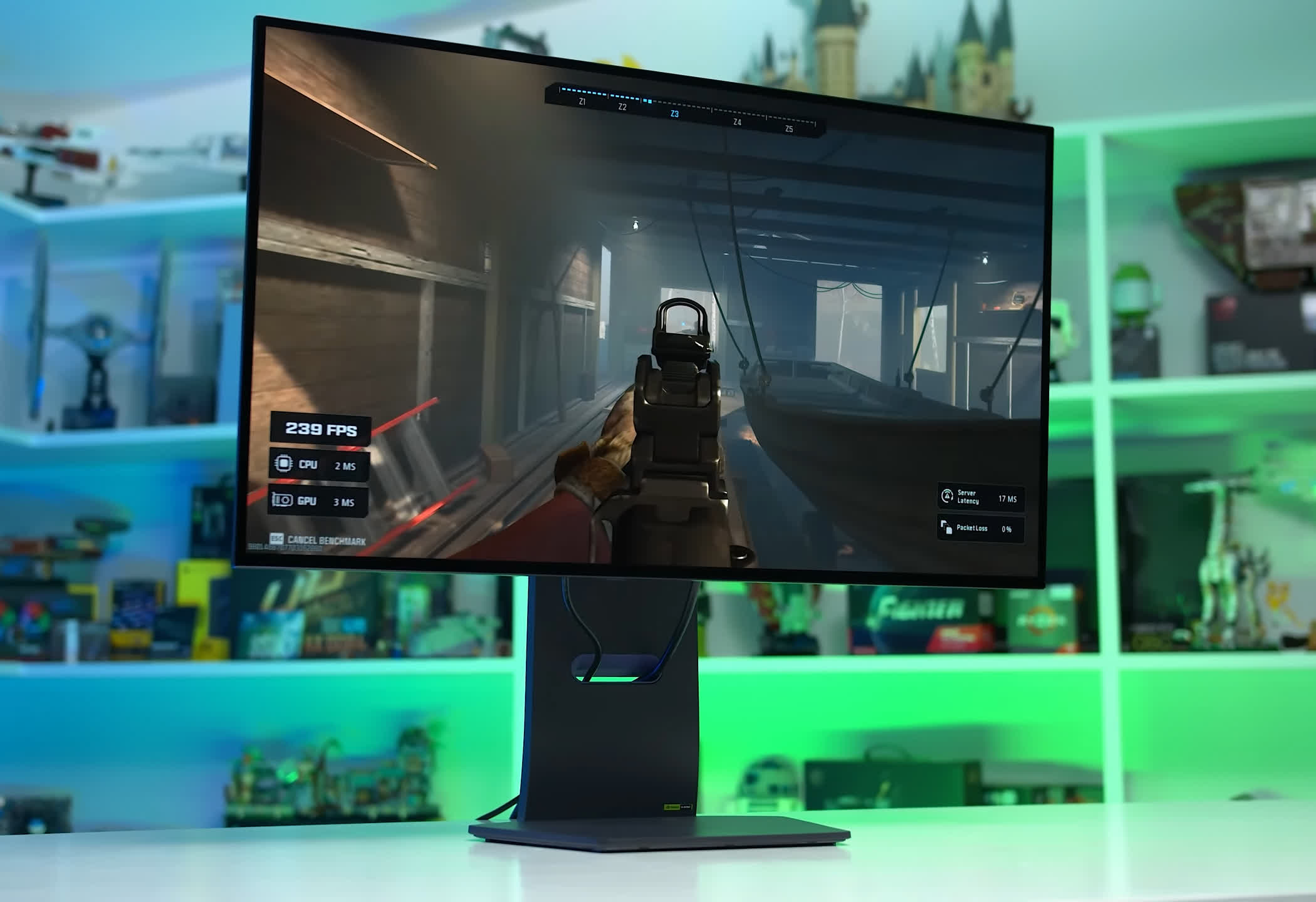[ad_1]
The ultimate 4K gaming monitor right now is one of the many 4K QD-OLEDs that hit the market in the first half of 2024. OLED brings lightning-fast response times and individual pixel control, resulting in an excellent HDR gaming experience for gamers. When you step up to 4K, you get a higher resolution, better text clarity, and a larger panel size, making these displays some of the best on the market overall.
While there are two 4K OLED variants available, QD-OLED is the better choice for most people. The 32-inch 4K 240Hz QD-OLED panels we’ve tested produce higher real-world HDR brightness, better color volume, slightly better text quality, and lower prices. The glossy screen coating can have issues in brighter environments, but the clarity it provides is highly sought after, especially if you’re not a fan of matte screens and their coating grain. Our recent 4K WOLED vs 4K QD-OLED feature goes into more detail on this.
We’ve tested four of the available 4K QD-OLED offerings – from Asus, Dell, Gigabyte and MSI – and overall performance is very similar between them, though each offers unique selling points. Generally speaking, if you’re after fast response times, great motion and text clarity, a high refresh rate at 4K, excellent HDR, deep blacks, etc., you get that with all the models, so it’s hard to go wrong. They all share the same QD-OLED panel which explains why the performance characteristics are so similar.
To help you decide on a specific model, here’s what we recommend:
- The Asus ROG Swift PG32UCDM has the best feature set with an unlocked sRGB mode, ELMB black frame insertion, and promised Dolby Vision support, but is typically the most expensive.
- The Gigabyte Aorus FO32U2P is the only one with DisplayPort 2.1 UHBR20 connectivity, providing a way to access 4K 240Hz without DSC.
- The Dell Alienware AW3225QF is the cheapest variant in most regions, sometimes by a significant margin, which makes it a great choice if you don’t mind the curved panel. It also supports Dolby Vision out of the box.
- The MSI MPG 321URX is the most affordable in the US and has the best set of user customizable OLED care features.
There are also several models we haven’t tested that could offer better value. The Gigabyte FO32U2 is the same as the U2P model but without DisplayPort 2.1, and it’s typically cheaper. There’s also the MSI MAG 321UPX, similar to the 321URX but without USB ports. Originally, this model didn’t support firmware updates, but now MSI tells us it does, though we haven’t tested how it works yet.
While we think the 4K 240Hz QD-OLED offerings are generally the way to go for most buyers, especially those focused on single-player HDR gaming, 4K WOLED is still worth considering in some situations.
If you’re a gamer who loves fast-paced competitive multiplayer titles, a 4K WOLED like the LG 32GS95UE might be the better choice. These 32-inch WOLED panels offer a unique “Dual Mode” feature that allows switching between 4K 240Hz and 1080p 480Hz modes at the press of a button.
The 1080p 480Hz mode has noticeably better motion clarity and lower input lag than 4K 240Hz modes, making it better for playing titles like Counter-Strike, Call of Duty, or Apex Legends – if you don’t mind the drop in resolution.
Given that it also supports 4K 240Hz, you can switch back to a higher resolution experience for single-player or less motion-sensitive titles, giving you the best of both worlds – an awesome feature for those who enjoy a wide variety of games. However, the LG is more expensive than a typical QD-OLED, is less well-calibrated, doesn’t get as bright in real-world scenes, and lacks other features.
[ad_2]
Source link

